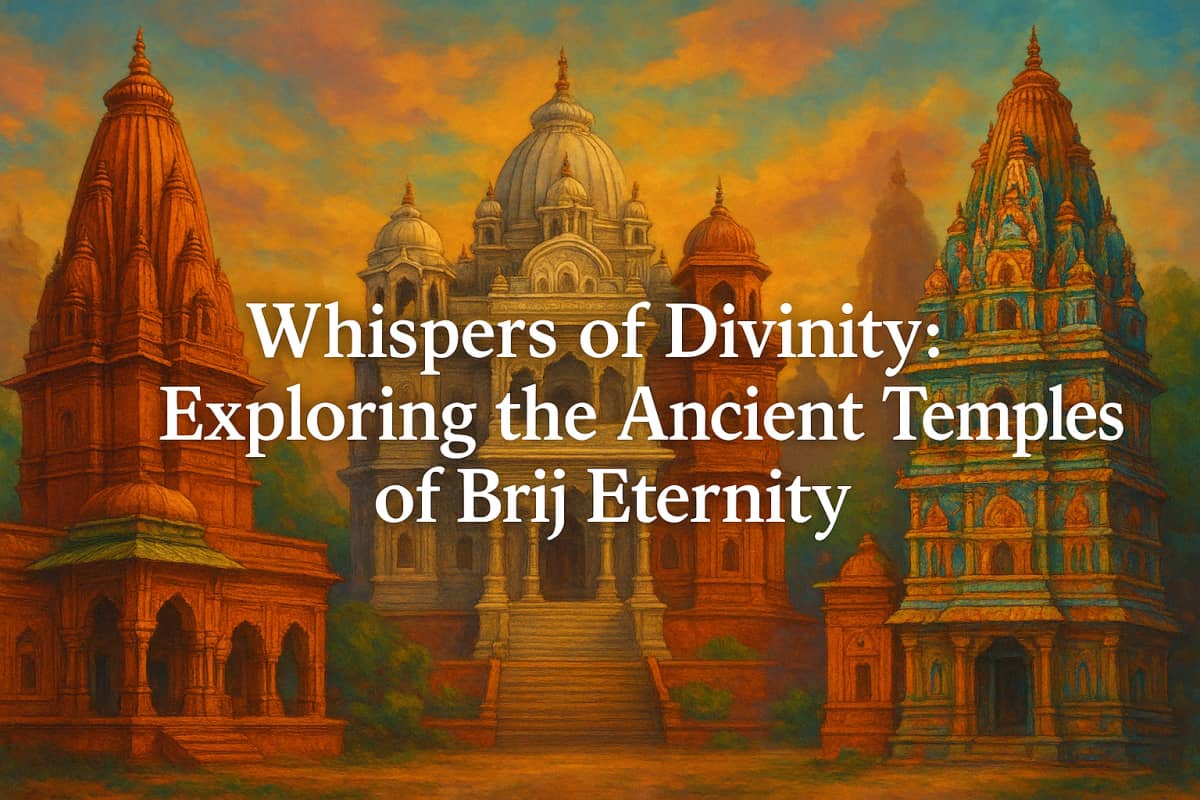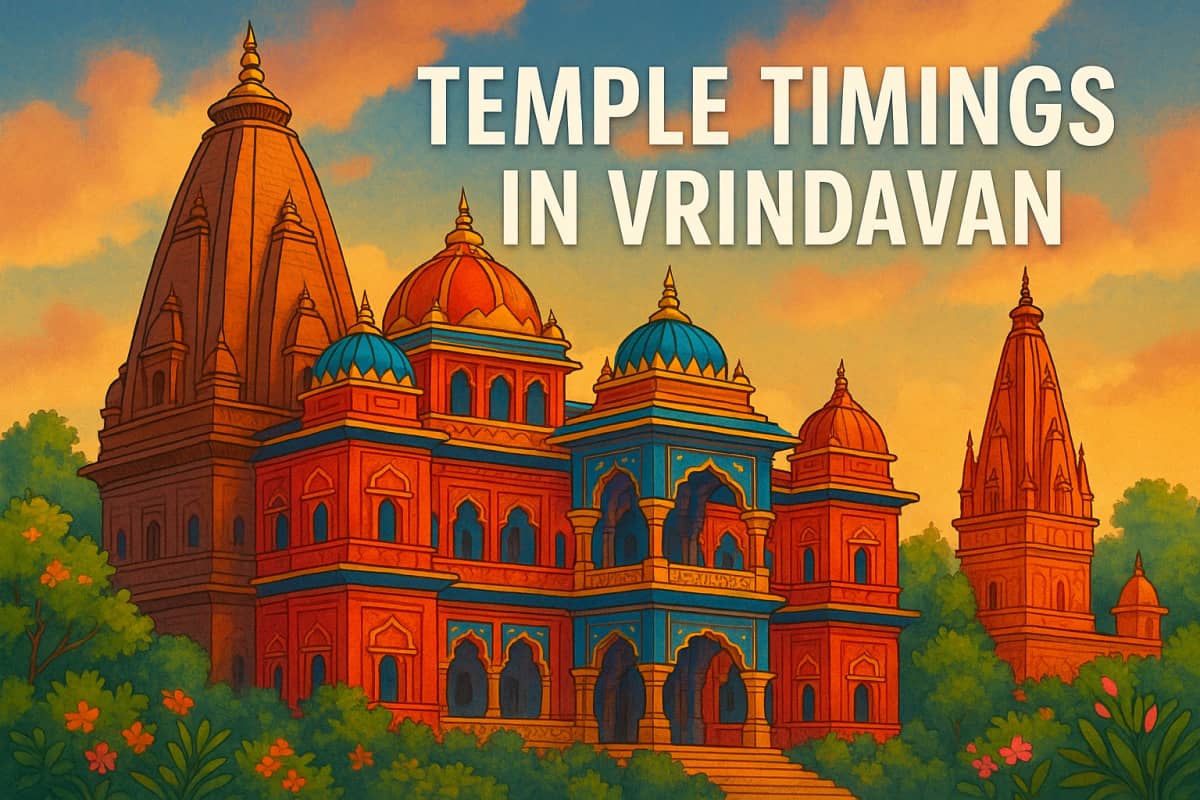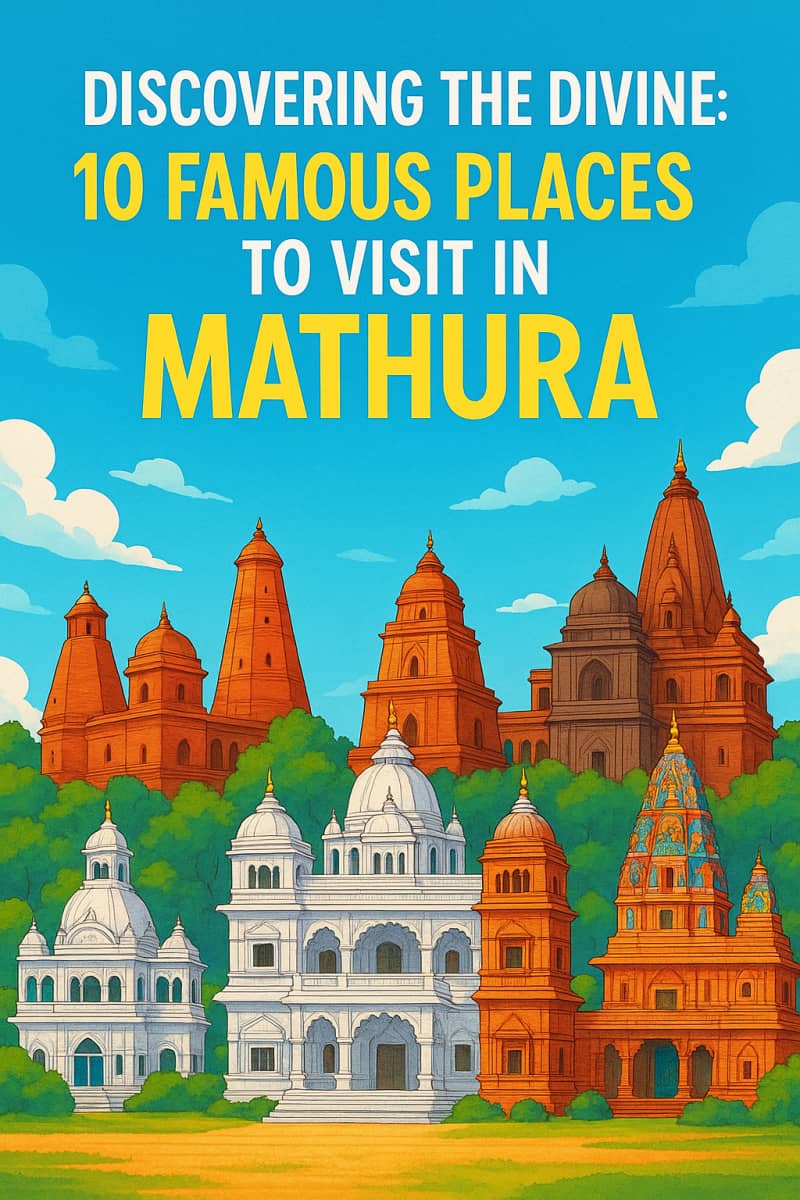Vrindavan, the sacred town nestled along the Yamuna River in Uttar Pradesh, India, is where the divine love story of Radha and Krishna continues to enchant hearts. Steeped in mythology and vibrant with devotion, this town is dotted with temples that are both spiritual sanctuaries and cultural landmarks. Here’s a soul-stirring journey through the 10 most revered temples that make Vrindavan a timeless spiritual retreat.
1. Banke Bihari Temple
Significance: One of the most beloved temples in Vrindavan, Banke Bihari is dedicated to Lord Krishna in his charming, mischievous child form. The idol’s signature Tribhanga (three-fold) posture, paired with the absence of bells, creates an ambiance steeped in sacred serenity.
Highlight: Devotees experience darshan in brief intervals, heightening the anticipation and spiritual intimacy of each glimpse.
2. Prem Mandir (Temple of Divine Love)
Significance: A modern architectural marvel, Prem Mandir beautifully depicts the leelas (divine pastimes) of Radha-Krishna and Sita-Ram in luminous white marble.
Highlight: As night falls, the temple comes alive with a spectacular light-and-sound show that paints Krishna’s divine love across the skies.
3. ISKCON Temple (Sri Sri Krishna-Balaram Mandir)
Significance: Built by Srila Prabhupada, this global hub of Gaudiya Vaishnavism honors Krishna and his elder brother Balaram. It is a center of kirtan, devotion, and spiritual discourse, drawing seekers from around the world.
Highlight: The soulful chanting and energetic atmosphere make it a vibrant heart of Vrindavan’s spiritual rhythm.
4. Radha Raman Temple
Significance: This sacred space houses a self-manifested deity of Krishna—Radha Raman—created from a saligram shila by Gopala Bhatta Goswami. Radha is worshipped symbolically through a crown beside the deity.
Highlight: The temple exudes old-world charm, with intricate rituals and daily offerings steeped in centuries-old tradition.
5. Madan Mohan Temple
Significance: Perched atop Aditya Tila hill, this is Vrindavan’s oldest surviving temple, built in 1580. It honors Krishna as Madan Mohan—the enchanter of even Kamadeva, the god of love.
Highlight: Its lofty position provides sweeping views of the Yamuna and Vrindavan, while its red sandstone structure reflects Mughal-Rajput architectural finesse.
6. Nidhivan
Significance: Shrouded in mystique, Nidhivan is a sacred grove where Krishna is believed to perform the Raas Leela with Radha and the gopis each night. The area is off-limits after sunset due to its supernatural lore.
Highlight: The nearby Rang Mahal, where Radha-Krishna are said to rest, adds an ethereal touch to the grove’s divine aura.
7. Shri Ranganatha Temple (Rangaji Temple)
Significance: A unique blend of South Indian Dravidian and North Indian architectural styles, this sprawling complex is dedicated to Lord Vishnu as Ranganatha.
Highlight: Its grand annual Brahmotsavam festival transforms the temple into a vivid carnival of devotion and culture.
8. Radha Damodar Temple
Significance: Established in 1542 by Jiva Goswami, this temple is among Vrindavan’s seven principal Goswami temples. It houses the sacred Giriraj Shila, bearing Krishna’s footprints, gifted to Sanatana Goswami. The temple complex also includes the samadhis of Rupa Goswami, Jiva Goswami, and Krishnadasa Kaviraja.
Highlight: Srila Prabhupada, the founder of ISKCON, resided here for six years before embarking on his mission to the West, composing significant works like the Srimad Bhagavatam during his stay.
9. Gopeshwar Mahadev Temple
Significance: A rare Shiva temple in Vrindavan, it celebrates Lord Shiva’s devotion to Krishna. Shiva, in the form of Gopeshwar, is believed to have assumed a gopi form to witness the Raas Leela.
Highlight: Nestled near the Yamuna, the temple radiates peaceful vibes perfect for meditation and reflection.
10. Radha Vallabh Mandir
Significance: This temple reflects Ras-Bhakti, where Radha is worshipped as the soul of Krishna. Instead of a separate idol, her presence is marked by a crown beside Krishna.
Highlight: The temple’s hallmark festival, Radha Vallabh Saptah, draws thousands for days of continuous bhajans and spiritual celebration.
Tips for Visitors
-
Attire: Dress conservatively to show respect; shoes and sunglasses should be removed before entering temple premises (watch out for the mischievous monkeys!).
-
Festivals: Experience Vrindavan in full bloom during Janmashtami, Holi, and Kartik (October–November), when the town pulses with divine celebration.
-
Getting Around: E-rickshaws and scooters are ideal for navigating the narrow, temple-filled lanes of Vrindavan.
Conclusion
Vrindavan isn’t just a place—it’s an emotion, a living poem in praise of Radha-Krishna’s eternal love. Each temple echoes with centuries of devotion, beckoning visitors to lose themselves in divine bliss. As the scriptures proclaim, “Even a single step taken in Vrindavan can absolve lifetimes of sins.” Come, walk that sacred path and let your soul be touched by the magic of Krishna’s abode.





